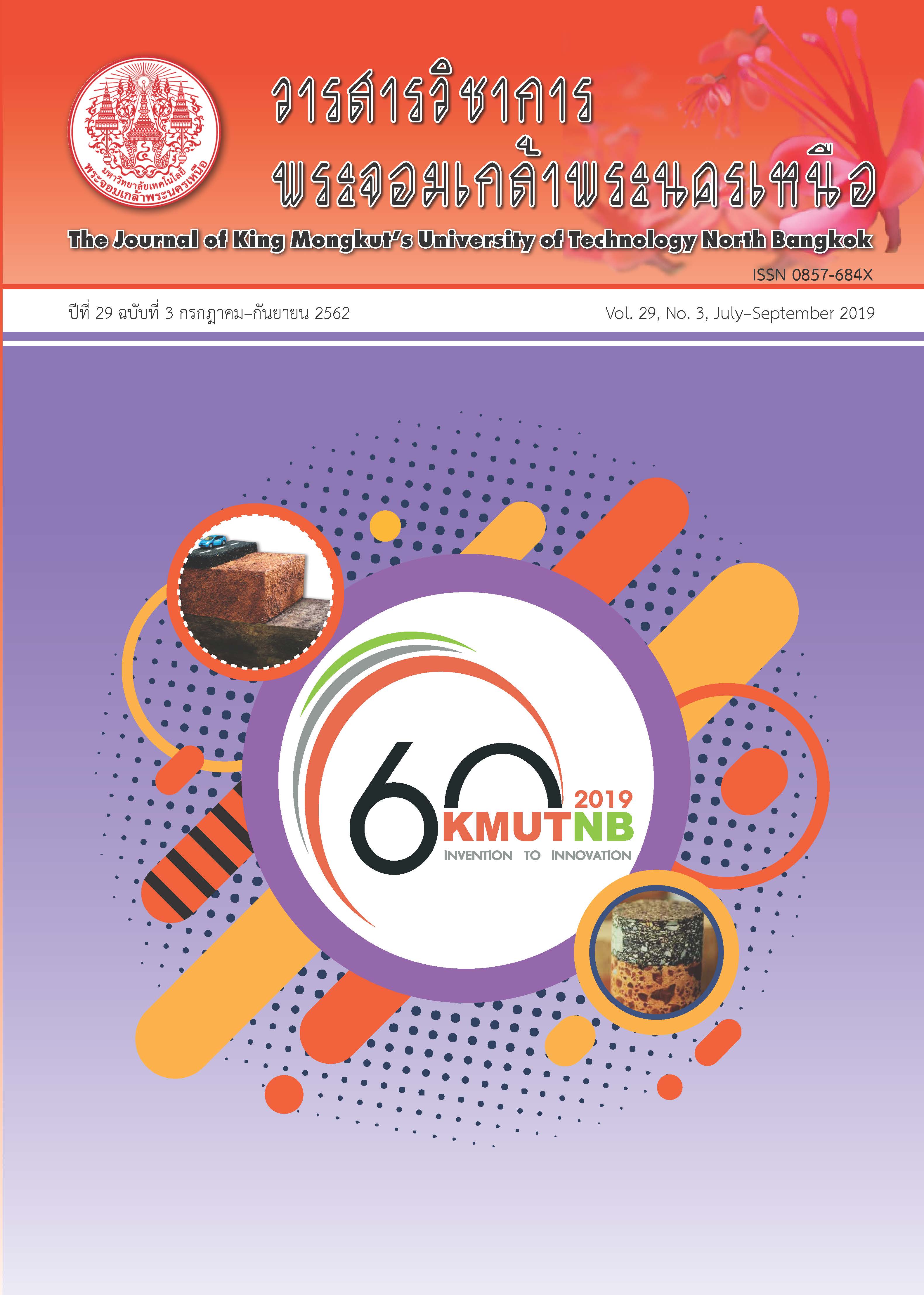การเปรียบเทียบวิธีกำหนดปริมาณสั่งซื้อสำหรับสินค้าที่ปริมาณความต้องการไม่สม่ำเสมอของร้านค้าปลีกอุปกรณ์ฮาร์ดแวร์
Main Article Content
บทคัดย่อ
วัตถุประสงค์ของการวิจัยนี้คือการเปรียบเทียบต้นทุนสินค้าคงคลังของร้านค้าปลีกอุปกรณ์ฮาร์ดแวร์ของการกำหนดปริมาณสั่งซื้อสินค้าด้วยวิธี Wagner-Whitin และวิธีฮิวริสติกกับต้นทุนจริงของร้าน วิธีฮิวริสติกที่ศึกษาคือ วิธี Part-Period Balancing, Silver-Meal และ Least Unit Cost โดยศึกษาเฉพาะสินค้ากลุ่ม A ที่ซื้อจากผู้ขาย 3 ราย กำหนดให้มีการสั่งซื้อสินค้าแต่ละรายการแยกจากกัน ข้อมูลนำเข้าคือปริมาณความต้องการสินค้ารายสัปดาห์ระหว่างเดือนกรกฎาคมถึงธันวาคมพ.ศ. 2560 นอกจากนั้นมีการบันทึกต้นทุนสินค้าคงคลังที่เกิดขึ้นจริงของร้านเพื่อใช้เปรียบเทียบกับต้นทุนสินค้าคงคลังของวิธีกำหนดปริมาณสั่งซื้อแบบต่างๆ ปริมาณความต้องการรายสัปดาห์ของสินค้าทุกรายการมีค่าสัมประสิทธิ์ความแปรผันที่มากกว่า 0.20 แสดงถึงปริมาณความต้องการที่ไม่สม่ำเสมอ วิธีฮิวริสติกมีต้นทุนสินค้าคงคลังต่ำกว่าต้นทุนที่เกิดขึ้นจริงของร้านสำหรับสินค้าทุกรายการ ต้นทุนที่เพิ่มขึ้นจากการใช้วิธีฮิวริสติกแทนที่จะใช้วิธี Wagner-Whitin ซึ่งเป็นวิธีที่ให้ต้นทุนสินค้าคงคลังต่ำที่สุดนั้นเฉลี่ยแล้วไม่เกิน 8% ต้นทุนสินค้าคงคลังเฉลี่ยของวิธี Silver-Meal ต่ำสุดในกลุ่มวิธีฮิวริสติกแต่ต้นทุนเฉลี่ยของวิธีฮิวริสติกแตกต่างกันไม่เกิน 3%
Article Details
บทความที่ลงตีพิมพ์เป็นข้อคิดเห็นของผู้เขียนเท่านั้น
ผู้เขียนจะต้องเป็นผู้รับผิดชอบต่อผลทางกฎหมายใดๆ ที่อาจเกิดขึ้นจากบทความนั้น
References
[2] W. J. Stevenson, Operations Management, 12th ed., NY: McGraw-Hill, 2015.
[3] H. M. Wagner and T. M. Whitin, “Dynamic version of the economic lot size model,” Management Science, vol. 5, no.1, pp. 89–96, 1958.
[4] E. A. Silver, D. F. Pyke, and D. J. Thomas, Inventory and Production Management in Supply Chains, 4th ed., Boca Raton, FL: CRC Press, 2017.
[5] C. Thavornwat and R. Kanchana, “Improvement of the inventory management system: A case study in make-to-order production system,” Journal of Engineering, RMUTT, vol. 11, no. 2, pp. 13–23, 2013 (in Thai).
[6] K. Phalika and N. Suwannasap, “Inventory management by applying the theory of ABC classification analysis, EOQ model techniques and Silver-method: A case study of XYZ,” Phranakhon Rajabhat Research Journal (Humanities and Social Sciences), vol. 11, no. 1, pp. 102–114, 2016 (in Thai).
[7] J. Uansamer and O. Kittithreerapronchai, “Chemical inventory management in tire cord fabric industry using lot sizing,” The Journal of King Mongkut’s University of Technology North Bangkok, vol. 24, no 2, pp. 308–317, 2014 (in Thai).
[8] P. M. Swamidass, “Wagner-Whitin Algorithm,” in Encyclopedia of Production and Manufacturing Management, Boston, MA: Springer, 2000.
[9] R Core Team. (2013). R: A language and environment for statistical computing. R Foundation for Statistical Computing, Vienna, Austria. [Online]. Available: http://www.R-project.org/
[10] M. Marchena. (2018, March). SCperf: Functions for Planning and Managing Inventories in a Supply Chain. R package version 1.1.1 [Online]. Available: https://CRAN.R-project.org/package=SCperf
[11] M. Scherotter. (2015, October) Small Basic 1.2 Released with Kinect Support and Bug Fixes. Small Basic. MSDN Blogs. Microsoft [Online], Available: https://blogs.msdn.microsoft.com/smallbasic/2015/10/01/small-basic-1-2-releasedwith-kinect-support-and-bug-fixes/
[12] M. O’Connor. (2018, September). “Coefficient of variation”. Lean Math: Figuring to Improve Blog, [Online], Available: http://www.leanmath.com/blog-entry/coefficient-variation
